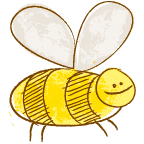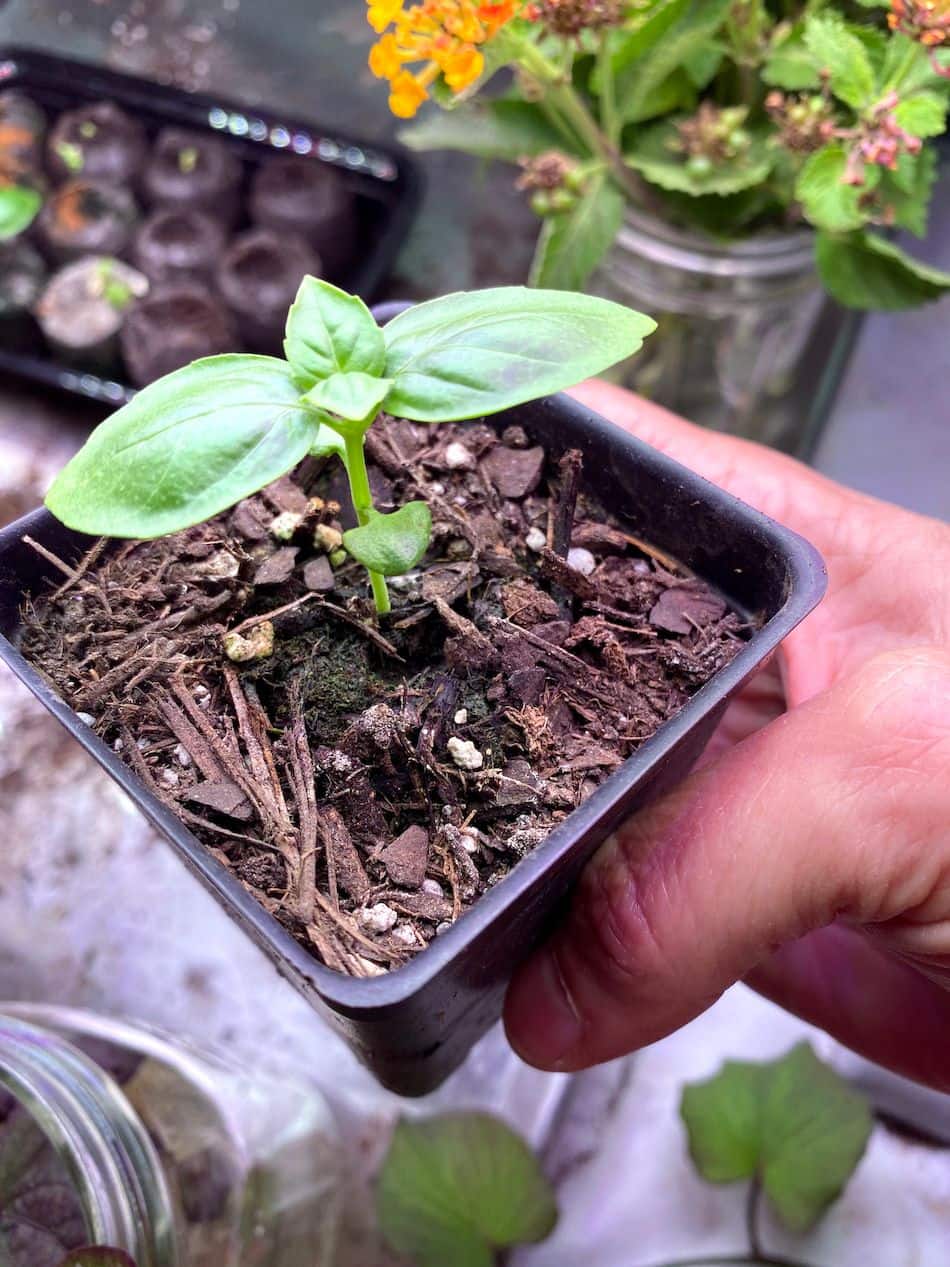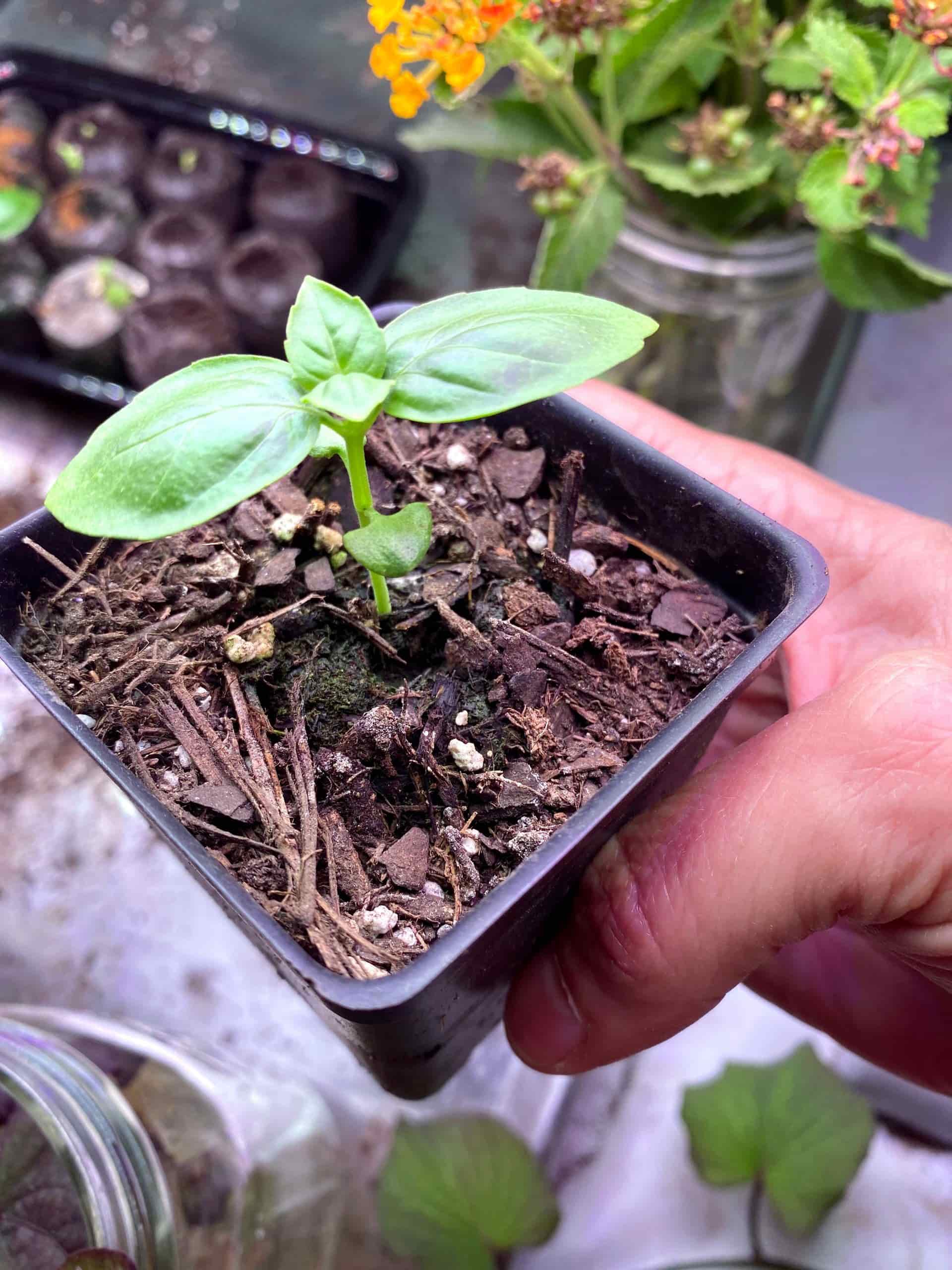Bonus Tips for Sprouting
I really like sprouting my seeds in a moist paper towel. First, find a domed container. I recycle a plastic to-go container, something like a rotisserie-chicken container.
Lay a paper towel in the bottom of the clean container. Make a row of seeds. Fold the paper towel over the seeds and then add some warm water until it’s just moist. Close the lid and you’ve just made a greenhouse! Watch your seeds every day and as soon as you see a little root with tiny leaves, very gently place the spout into a peat puck and follow the same instructions as above.
You can turn this activity into a fun learning experience for kids. Chart how long it takes different types of seeds to sprout. Record how fast each one grows. Measure how tall they get. You can even try different locations in the house to see where they grow the fastest.
If you have dried beans in the pantry, experiment with those and see if they will sprout. Most seeds will sprout for years after they are dried, beans especially! Beware, you may wind up with a beanstalk!
Get Crafty with Your Own Seed Packets
Need somewhere to store your seeds for future planting or want to swap seeds with a friend? Print, color and create your own seed packets with our DIY Seed Packets.
Happy sprouting!









